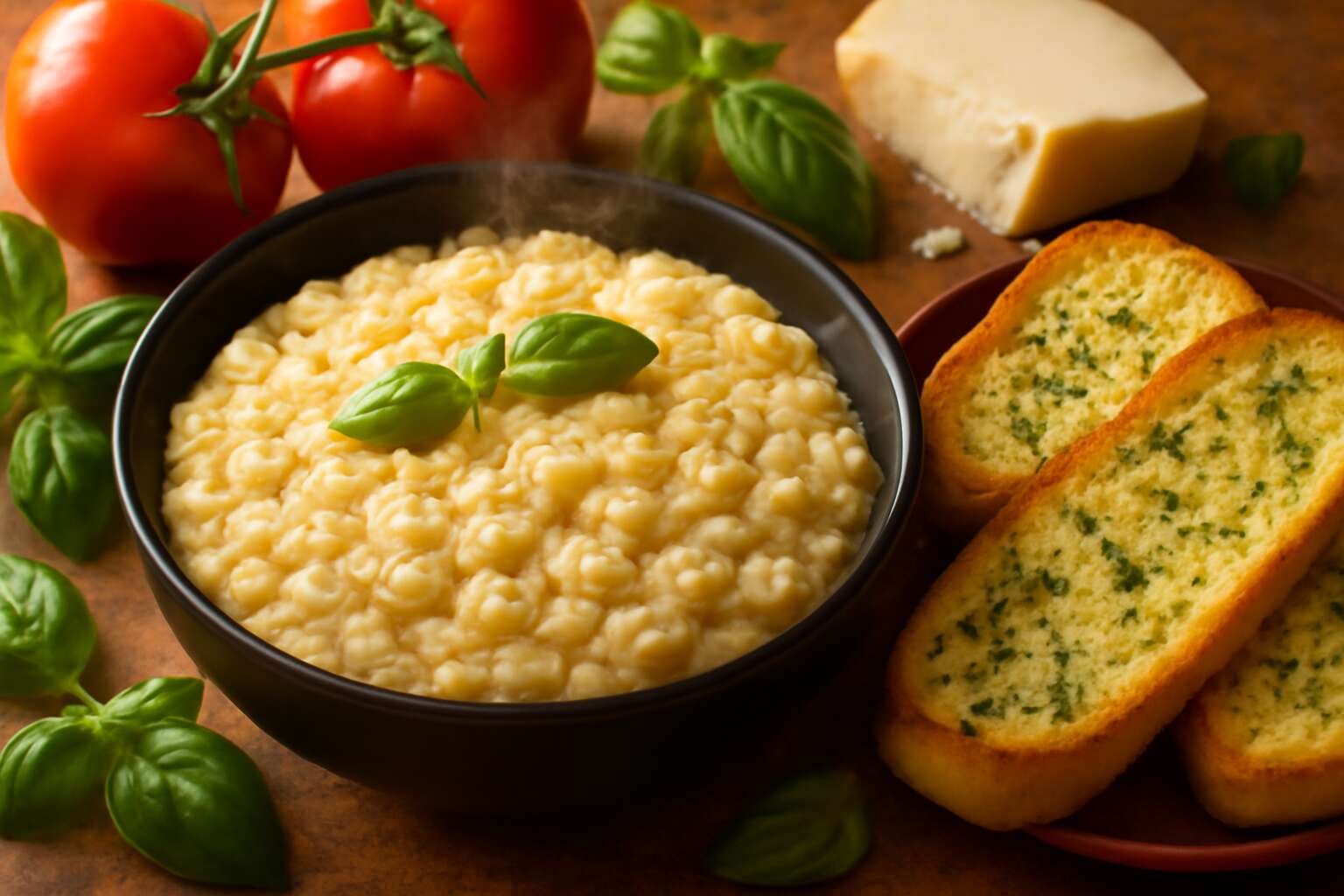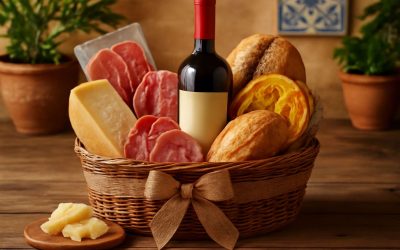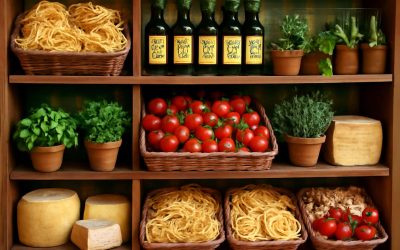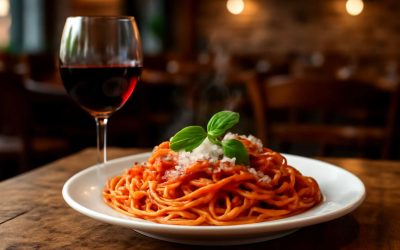Popular Italian Dishes and Their Origins
Classic Pasta Dishes – Array
Italian cuisine is a tapestry woven with centuries of history, culture, and culinary innovation. Among the myriad dishes that define Italy’s gastronomic identity, some stand out not only for their flavour but for their rich stories. When pondering what Italian food is the best, classic pasta dishes invariably come to mind. These dishes encapsulate Italy’s regional diversity and its mastery of simplicity and quality ingredients.
Take, for example, the renowned Spaghetti Carbonara, originating from Rome, which combines eggs, Pecorino cheese, pancetta, and black pepper into a creamy yet robust sauce. Meanwhile, the Lasagne alla Bolognese hails from Emilia-Romagna, layering sheets of pasta with rich Bolognese sauce and béchamel, creating a hearty, comforting dish. And who could forget the delicate elegance of Pesto Genovese, a basil-based sauce from Liguria, that transforms simple pasta into a flavourful masterpiece?
- Spaghetti Carbonara – Roman tradition and culinary ingenuity
- Lasagne alla Bolognese – Embracing regional richness
- Pesto Genovese – The fresh taste of Liguria
These classic pasta dishes exemplify why Italian food is celebrated worldwide. They reveal that what Italian food is the best often hinges on authentic recipes crafted with love and tradition—elements that make Italian cuisine truly timeless.
Iconic Pizza Varieties – Array
Italian cuisine is renowned for its rich diversity and deep-rooted traditions, with each region offering its own culinary treasures. Beyond pasta, Italy’s culinary landscape boasts an array of popular Italian dishes that reflect centuries of history, local ingredients, and cultural influences. From hearty stews to delicate seafood, these dishes exemplify the country’s gastronomic ingenuity. For instance, Osso Buco from Lombardy offers tender veal shanks simmered in aromatic broth, while Risotto alla Milanese enchants with its saffron-infused creaminess. These authentic recipes are crafted with love, making them timeless staples of Italian cooking.
When exploring what Italian food is the best, one cannot overlook Italy’s iconic pizza varieties. The Neapolitan pizza, with its thin, chewy crust topped with fresh tomatoes, mozzarella, and basil, embodies simplicity and perfection. Alternatively, the Roman-style pizza features a thinner, crispier base that’s perfect for folding and enjoying on the go. Notably, these pizza styles showcase Italy’s mastery of balancing flavours and textures, elevating humble ingredients into culinary masterpieces.
Traditional Risottos – Array
Among Italy’s culinary treasures, traditional risottos stand as timeless exemplars of regional ingenuity. These creamy, tender rice dishes are a testament to Italy’s mastery of turning humble ingredients into culinary art. Each region boasts its own variation, reflecting local flavours and terroir—think of the vibrant saffron-infused Risotto alla Milanese or the hearty Risotto al Tartufo from Piedmont.
What Italian food is the best? For many connoisseurs, the answer lies in the rich tapestry of authentic risottos that showcase Italy’s capacity for elevating simple fare into something divine. The process itself demands patience and precision, a dance of rice, broth, and aromatic additions. To truly appreciate Italy’s gastronomic depth, one must explore these traditional risottos, each telling a story of history, culture, and regional pride.
Hearty Meat Dishes – Array
When pondering what Italian food is the best, few dishes evoke the same hearty satisfaction as Italy’s robust meat creations. These hearty meat dishes are the culinary backbone of many regional traditions, showcasing Italy’s mastery of slow-cooked, flavour-packed fare. From the succulent Osso Buco alla Milanese to the smoky, tender Brasato al Barolo from Piedmont, each bite tells a story of history and regional pride.
Italy’s love affair with meat isn’t limited to just one dish; it’s an entire universe of gastronomic delight. Here’s a quick rundown of some iconic hearty meat dishes that define Italy’s culinary versatility:
- Osso Buco – a Milanese speciality featuring braised veal shanks infused with saffron and gremolata
- Brasato al Barolo – slow-cooked beef in rich Barolo wine, originating from Piedmont
- Porchetta – a savoury, herb-stuffed roasted pork, a festival favourite across central Italy
These dishes exemplify the kind of culinary craftsmanship that makes you wonder: what italian food is the best? The answer, in essence, lies in these soul-warming, meat-loving masterpieces that turn simple ingredients into unforgettable experiences. After all, nothing beats a slow-cooked, flavour-rich Italian meat dish when exploring the depths of Italy’s culinary landscape.
Regional Italian Specialties
Northern Italy – Array
In the labyrinth of Italy’s culinary landscape, Northern Italy emerges as a region with a distinctive palate that challenges the conventional notion of what italian food is the best. Its culinary identity is deeply rooted in the Alpine terrain and fertile plains, forging flavours that are both refined and robust. The elegance of dishes like *bollito misto* and the hearty richness of polenta reveal a complex tapestry of tradition and innovation. These regional specialties exemplify a nuanced approach to ingredients, where subtlety meets intensity, leaving an indelible mark on anyone pondering what italian food is the best.
Distinctive ingredients such as fresh freshwater fish from Lake Garda or truffles from Piedmont elevate regional dishes to artistry. The Northern palate often gravitates towards preserved and cured meats—think speck and prosciutto—highlighting the region’s mastery in balancing salt, smoke, and flavour. This culinary sophistication prompts a deeper exploration of regional Italian specialties, revealing that what italian food is the best can vary greatly depending on the soul of each locality. Truly, Northern Italy’s cuisine invites us to reconsider the very essence of regional authenticity and culinary excellence.
Central Italy – Array
In the heart of Italy’s lush landscapes, Central Italy offers a culinary symphony that embodies rustic charm and refined artistry. This region’s specialties are a testament to centuries of tradition, where simple ingredients are transformed into dishes that echo with history and flavour. Unlike the more globally renowned pasta and pizza, Central Italy’s cuisine reveals a treasure trove of lesser-known delights that make us ponder what italian food is the best. It’s a place where every bite is a journey into a land of soulful, hearty, and sophisticated tastes.
For those seeking an authentic experience, regional specialties such as **wild boar ragù from Umbria** or the aromatic **truffles of Marche** stand out. These ingredients elevate dishes beyond mere sustenance into culinary masterpieces. Moreover, the region boasts a rich variety of cheeses, cured meats, and vibrant vegetables, which are often prepared with ancient techniques handed down through generations. It’s no wonder that Central Italy’s cuisine captivates the palates of connoisseurs and casual diners alike, challenging preconceived notions of what italian food is the best.
Southern Italy – Array
Southern Italy offers a culinary landscape as vibrant and diverse as its scenery. Unlike the more internationally celebrated pasta and pizza, this region’s cuisine boasts bold flavours rooted in centuries-old traditions. It’s here that you’ll find dishes that truly challenge the question of what italian food is the best—dishes that are often overlooked but packed with character and history.
From the fiery spices of Calabria to the fresh seafood along the Amalfi Coast, southern Italy’s specialties reflect a land of contrasts. The region’s unique ingredients, such as sun-ripened tomatoes, fragrant citrus, and wild herbs, are woven into dishes that are both simple and sophisticated. Regional delicacies like **eggplant Parmesan from Naples** or the spicy **Sicilian caponata** are perfect examples of how local produce defines the cuisine.
In southern Italy, culinary pride is also evident in its diverse array of street foods and traditional offerings. For example, the famous **arancini rice balls** or **focaccia bread** are not just quick bites but symbols of local culture. This rich tapestry of flavours and techniques makes southern Italy a compelling answer to what italian food is the best, especially for those seeking authenticity and depth in their culinary exploration.
Italian Food Ingredients That Define the Cuisine
Fresh Pasta and Flour – Array
When it comes to defining what italian food is the best, few elements are as fundamental as the ingredients that form its backbone. Fresh pasta and high-quality flour are the unsung heroes behind Italy’s culinary mastery. Imagine a plate of perfectly al dente tagliatelle or delicate ravioli — it all begins with the right flour, often ‘00’ flour, prized for its fine grind and ability to produce silky, tender pasta that holds sauce beautifully. Italians have perfected the art of blending simple ingredients into something extraordinary, and flour is the canvas that makes it all possible.
In Italy, the emphasis on fresh pasta ingredients isn’t just tradition — it’s a devotion to quality that elevates everyday dishes into culinary art. Whether crafting lasagne sheets or gnocchi, the choice of flour and the freshness of pasta are what set Italian cuisine apart. So, when pondering what italian food is the best, look no further than the humble yet essential pasta and flour—these ingredients undeniably define the soul of Italian cooking. They’re the secret behind why Italian food continues to enchant the world, one bite at a time.
Olive Oil and Tomatoes – Array
Few ingredients embody the heart and soul of Italian cuisine quite like olive oil and tomatoes. These elements are more than mere components; they are the very essence of Italy’s culinary identity. Rich, golden olive oil—often described as liquid gold—transcends its role as a cooking medium to become a flavour enhancer that elevates every dish it touches. Its nuanced aroma and velvety texture add depth, embodying centuries of craftsmanship and tradition.
Meanwhile, the humble tomato, with its vibrant colour and complex sweetness, has become synonymous with Italian comfort food. Whether in a simple bruschetta, a rich marinara sauce, or a vibrant caprese salad, the tomato’s natural acidity balances the richness of olive oil, creating a harmony that is uniquely Italian. When combined, these ingredients forge a flavour profile that is both rustic and refined, capturing the essence of what italian food is the best.
It’s no wonder that many consider these staples to be the backbone of authentic Italian dishes. Their versatility not only showcases the diversity within Italian cuisine but also highlights the importance of quality ingredients—a testament to Italy’s unwavering devotion to culinary excellence. No matter where in Italy one travels, the marriage of olive oil and tomatoes remains a cultural and gastronomic constant, forever defining the soul of Italian cooking.
Cheeses – Array
Cheese, an essential pillar of Italian cuisine, embodies a symphony of textures and flavours that elevate every dish to a realm of culinary artistry. Italy’s diverse regions have perfected their own varieties, each with a storied past and unique character. From the creamy decadence of mozzarella to the sharp tang of pecorino, these cheeses are not merely ingredients—they are expressions of local terroir and tradition.
In particular, the world-renowned Parmigiano-Reggiano exemplifies Italy’s mastery of ageing and craftsmanship, offering a complex umami profile that enhances countless dishes. Meanwhile, soft cheeses like ricotta lend a delicate sweetness to layered lasagnas and cannelloni, adding a velvety texture that melts in the mouth. The rich, pungent gorgonzola provides an intriguing contrast in flavour profiles, showcasing Italy’s culinary ingenuity.
To understand what Italian food is the best, one must recognise how these cheeses interact with other staple ingredients. They create a harmony that is both rustic and refined, embodying Italy’s devotion to quality and tradition. For those seeking authentic Italian dishes, these cheeses serve as the flavourful backbone that defines the cuisine’s depth and sophistication.
Herbs and Spices – Array
Italian cuisine is a symphony of flavours, and at its heart lie the herbs and spices that elevate each dish beyond mere sustenance. These ingredients embody Italy’s deep-rooted appreciation for subtlety and balance, transforming simple components into culinary masterpieces. Basil, oregano, rosemary, and thyme are not just herbs—they are the essence of Italian identity, woven into every corner of the country’s vibrant food culture.
What Italian food is the best often hinges on the skilful use of these aromatic elements. They serve as the soul of sauces, marinades, and even bread, imparting an unmistakable aroma that awakens the senses. For instance, the fragrant basil in a classic Caprese salad or the robust oregano in rich tomato sauces exemplifies Italy’s mastery of flavour layering. These spices are more than seasonings—they are a testament to centuries of tradition and regional craftsmanship.
In some regions, a pinch of saffron in risottos or a hint of fennel in sausage add depth and complexity. The careful balance of herbs and spices creates a harmony that is both rustic and refined—an enduring hallmark of Italy’s culinary philosophy. When exploring what Italian food is the best, it’s impossible to ignore the crucial role of these vibrant, fragrant ingredients that define Italy’s flavourful heritage. Their subtle power continues to enchant and elevate Italian dishes across generations, making each bite an experience of authentic artistry.
Why Italian Food Is Considered the Best
Authenticity and Heritage – The importance of traditional recipes and regional authenticity
Few culinary traditions boast the enduring charm and authenticity of Italian cuisine, where each dish is a testament to centuries of regional heritage. When pondering what Italian food is the best, it’s impossible to ignore the significance of traditional recipes that have been lovingly preserved and passed down through generations. These recipes are not mere instructions; they are cultural artefacts, embodying the history, climate, and social fabric of their regions.
Italian food’s reputation as the pinnacle of culinary authenticity hinges on regional nuances—whether it’s the creamy risottos of the north or the fiery, spice-laden dishes of the south. The importance of regional authenticity cannot be overstated, as it ensures each dish retains its unique flavour profile and traditional preparation methods. This dedication to heritage is why so many connoisseurs and casual diners alike seek to uncover what Italian food is the best, appreciating its colourful diversity and time-honoured authenticity.
Fresh and High-Quality Ingredients – Use of seasonal, fresh ingredients for flavor and nutrition
Italian cuisine’s allure lies not only in its rich tapestry of flavours but in its unwavering commitment to using fresh, high-quality ingredients. This dedication transforms simple elements into culinary masterpieces that tantalise the senses and nourish the body. Seasonal produce, vibrant herbs, and extra virgin olive oil form the backbone of authentic Italian dishes, ensuring each bite embodies purity and depth of flavour.
When pondering what Italian food is the best, it’s the unwavering emphasis on freshness that truly elevates these creations. Dishes are crafted with ingredients harvested at their peak, capturing the essence of Italy’s fertile landscapes. This not only guarantees superior taste but also preserves the nutritional integrity of each plate. If one were to list the key elements that distinguish Italian cuisine, the use of seasonal, fresh ingredients would undoubtedly top the list, making every dish a celebration of nature’s bounty.
Versatility and Variety – Range of dishes suitable for all tastes and occasions
Italian cuisine’s reputation for versatility is unmatched. It offers a stunning array of dishes that cater to all tastes and occasions. Whether you’re seeking a quick snack or an elaborate feast, there’s always something authentic to satisfy every palate. From light seafood salads to rich, slow-cooked stews, the diversity is staggering.
What Italian food is the best? That depends on personal preference, but the variety itself speaks volumes. You can find options suitable for family dinners, romantic evenings, or casual gatherings. The key lies in its adaptability—every region brings its unique flavours and techniques, making Italian food truly universal.
Some might prefer the comforting warmth of a traditional risotto, while others crave the crispy goodness of regional pizza varieties. This broad spectrum ensures that Italian cuisine remains a favourite worldwide. Its ability to cater to different dietary needs and taste profiles is what keeps it at the top of the culinary hierarchy.
Cultural Significance – How Italian cuisine reflects Italy’s rich history and culture
Italian food is not merely a culinary tradition; it is a living testament to Italy’s soul—its history, passion, and artistry woven into every dish. The rich tapestry of flavours and techniques tells stories of ancient kingdoms, seafaring traders, and pastoral villages, each contributing to what Italian food is the best. These recipes have been passed down through generations, embodying a cultural heritage that remains fiercely guarded and celebrated.
Every bite is a journey through Italy’s diverse landscapes—its rolling hills, sun-drenched coasts, and bustling cities. Regional ingredients such as fragrant herbs, robust cheeses, and vivid tomatoes serve as the foundation of this culinary narrative. It’s no coincidence that Italian cuisine’s authenticity and heritage are pivotal in defining what Italian food is the best—each dish a reflection of a storied past and a vibrant present.
In essence, what Italian food is the best? It’s a question that echoes through centuries of tradition, with each region offering its own unique flavour and character. Whether it’s the mysterious allure of Sicilian citrus or the refined simplicity of Tuscan fare, Italian cuisine remains a beacon of cultural expression—timeless, enigmatic, and endlessly captivating.
Tips for Choosing the Best Italian Food
Look for Authenticity – Prioritize dishes with genuine regional recipes
When it comes to answering the question of what Italian food is the best, authenticity reigns supreme. Italian cuisine isn’t just about delicious dishes; it’s a celebration of regional heritage and centuries-old culinary traditions. Prioritising dishes with genuine regional recipes ensures you experience the true essence of Italy’s diverse gastronomic landscape.
Look for restaurants and recipes that emphasise traditional methods—think slow-cooked ragùs from Emilia-Romagna or fresh seafood from Sicily. These authentic touches elevate a meal from mere sustenance to a cultural experience.
To truly appreciate what Italian food is the best, focus on dishes crafted with seasonal, high-quality ingredients and regional flair. This isn’t about mass-produced fare; it’s about flavours that tell stories of Italy’s history and geography. After all, the real magic lies in respecting heritage and sourcing the finest local produce—because when it comes to Italian cuisine, authenticity isn’t just a buzzword; it’s the secret ingredient.
Seasonal Menus – Opt for ingredients that are in season
Choosing the best Italian food often hinges on understanding the importance of seasonal ingredients. Fresh, in-season produce not only enhances the flavour but also respects Italy’s rich agricultural traditions. When ingredients are at their peak, dishes truly come alive—whether it’s a ripe summer tomato for a classic Caprese or autumnal mushrooms in a risotto. This approach elevates the dining experience from simple sustenance to a celebration of Italy’s diverse culinary heritage.
Opting for seasonal menus ensures that each bite aligns with Italy’s regional rhythms. For example, in Sicily, you might find fresh seafood during the summer months, while in northern Italy, hearty root vegetables shine in winter. This natural alignment guarantees that the ingredients used in traditional recipes are at their most vibrant and authentic. Ultimately, knowing what Italian food is the best depends on embracing these seasonal nuances, which serve as the true secret ingredient behind Italy’s iconic dishes.
Local Artisans and Fresh Markets – Source ingredients from trusted producers
In Italy, culinary excellence is rooted in a symphony of local craftsmanship and a reverence for authentic ingredients. When pondering what Italian food is the best, one cannot overlook the significance of sourcing ingredients directly from trusted producers and vibrant fresh markets. These hubs of genuine craftsmanship offer a treasure trove of seasonal produce, artisanal cheeses, and freshly caught seafood, ensuring that every dish resonates with Italy’s culinary soul.
To truly elevate the dining experience, seek out local artisans who uphold centuries-old traditions. Their dedication transforms simple ingredients into extraordinary creations. For example, select olive oils pressed from olives harvested at the peak of ripeness or cheeses crafted using age-old methods passed down through generations. These choices do more than enhance flavour—they connect diners with Italy’s rich cultural tapestry.
Incorporating a diverse palette of ingredients from trusted sources guarantees that each dish embodies the authentic spirit of regional Italian cuisine. Whether indulging in a northern risotto or southern seafood pasta, the quality of ingredients remains paramount in revealing what Italian food is the best.
- Fresh, seasonal produce
- Artisanal cheeses and cured meats
- Locally sourced seafood and meats
This commitment to authenticity and quality is the true hallmark of Italy’s gastronomic artistry, ensuring every bite is a celebration of Italy’s culinary heritage.
Combination of Flavors – Balance of herbs, spices, and textures
There’s an almost poetic harmony in how Italian cuisine balances a symphony of herbs, spices, and textures—each element crafted to elevate the next. When pondering what Italian food is the best, understanding how to create these exquisite combinations becomes essential. The secret lies in achieving a delicate equilibrium, where fresh herbs like basil, oregano, and thyme dance seamlessly with fragrant spices, enhancing rather than overpowering the dish.
Consider the role of texture—crispness of freshly baked bread pairs beautifully with the silky richness of a classic risotto or a tender cut of cured meat. In Italian culinary tradition, the art of blending contrasting textures and flavours is what transforms simple ingredients into a masterpiece. For instance, a well-balanced tomato sauce uses the acidity of fresh tomatoes, the aromatic presence of garlic, and a splash of high-quality olive oil, harmonising to produce what Italian food is the best—authentic, vibrant, and soul-stirring.
To truly master the art of flavour combination, pay close attention to seasonal ingredients and local herbs. A judicious use of salt, a touch of freshly ground black pepper, and a hint of chilli can elevate dishes without overshadowing their inherent character. Remember, the aim is to craft a cohesive culinary experience that resonates with Italy’s deep-rooted gastronomic heritage, where every bite tells a story of balance and authenticity.




0 Comments